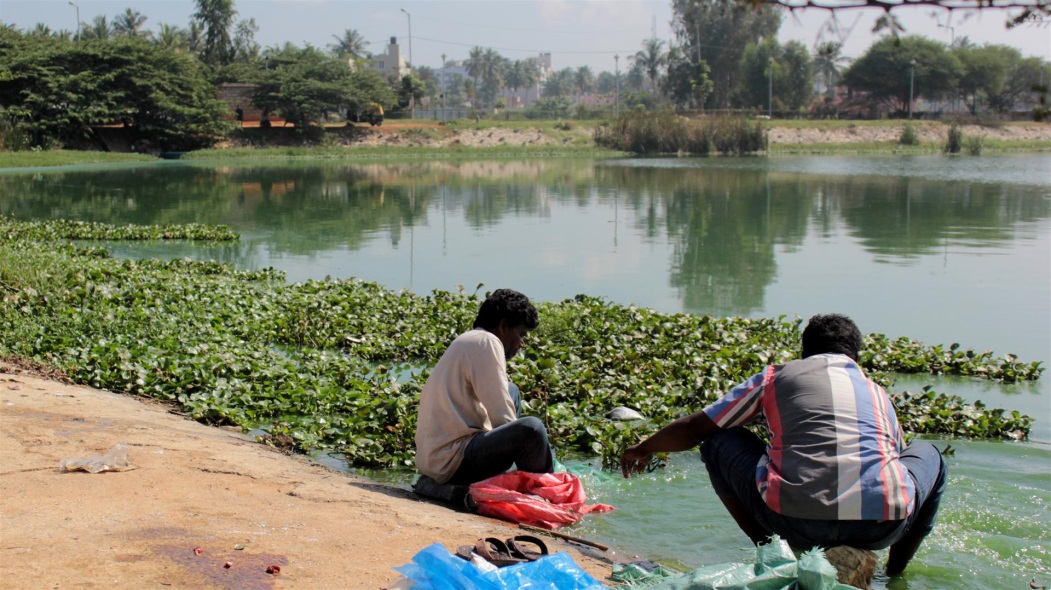An overview of the ‘Wellbeing Approach’

By Laura Camfield, East Africa Researcher - University of East Anglia

The Wellbeing approach
It takes into account not only a person's current circumstances, but also their aspirations, and the wider context in which these aspirations are formed and realised. This helps us to better understand what really matters to different groups at different times, and to get a holistic idea of how people view and experience the world around them.
Employing a wellbeing approach doesn’t require fundamental changes to typical social science methods; by combining different kinds of information (qualitative and quantitative data; objective, subjective and intersubjective data) the approach moves beyond simple vulnerability assessments. Instead research becomes more people-oriented and context-specific, and supports a socially differentiated and fluid understanding of people’s needs.
Within climate change adaptation research and practice specifically, we can use this approach to understand how environmental change - and interventions to address this change - affect people’s wellbeing. We can then gauge how adaptation policy and practice impacts on people’s vulnerability - both intentionally and unintentionally.
Applying a wellbeing approach in ASSAR
Professor Allister McGregor, one of the main proponents of wellbeing approaches within international development and natural resource management argues that “the challenge of sustainable development is the challenge of finding ways to live well together both in terms of people on the planet now and the people who will be on the planet in the future”1 . Does this broader temporal and spatial awareness require a wellbeing approach, or is it already part of our existing practice as researchers, practitioners and policy makers? At ASSAR we recognise that wellbeing – understood as being “not just about what people have, but what their goals and aspirations are … [and the] choices they make in trying to achieve these goals”2 – is central to the way in which we work with communities.
Shifting to a perspective that is ‘people-centred’ rather than ‘project-centred’ enables us to understand why interventions are or are not successful by looking at how people respond to them.
In his article about West Africa, for example, Edmond Totin describes how thousands of dollars could have been saved had the development project which funded sanitation facilities in a village realised that what the community really needed was secure grain storage and signage to facilitate visits from middle-men to sell their crops. Sanitation may be a universal human need, but at that point, community members were pursuing the equally important goal of food security.

ASSAR recently held a public webinar on wellbeing. View the recording of this webinar here!
A wellbeing approach also provides insights into the importance of relationships and the threat to people’s subjective wellbeing when these are damaged.
For example, in her article on wellbeing in Southern Africa, Irene Kunamwene describes how farmers in north-central Namibia feel themselves to be genuinely poor because they cannot share food with family members and neighbours as they did in the past, indicating how, in the words of one respondent, ‘poverty can destroy relationships’. In his article on wellbeing in East Africa, Daniel McGahey observes a similar phenomenon in Kenya where traditional pastoralist safety nets are being replaced by church-based or informal support.
Within research and practice, the relational ‘turn’ in wellbeing, which had previously focused more on material and subjective aspects, also helps us understand the intended and unintended impacts of policies and programmes on people’s vulnerability.
For example, in his article on wellbeing in India, Andaleeb Rahman describes how rural young people are increasingly relocating to the cities to avoid the drop in agricultural productivity due to higher temperatures, and as a result are facing the effects of climate change in urban areas, which include water and vector-borne diseases. Andaleeb observes that vulnerability to climate change is shaped by existing class, caste and gender tensions that intersect with poverty. Vulnerability to climate change also intersects with political marginalisation, for example, Edward Totin notes that a barrier to adaptation for smallholders in Mali is the lack of secure land tenure, highlighting the political nature of wellbeing research and practice.
Practically speaking, a wellbeing approach also offers a methodology for combining qualitative, quantitative, and objective, subjective and intersubjective data to address the same question from different angles. This is important in a multi-country programme such as ASSAR that aims to support people’s own adaptation strategies and understand the barriers they face in pursuing them.
In the second phase of ASSAR’s research (the Regional Research Phase; 2015-2018) this will involve encouraging a participatory process where people establish what they value most, for example, through ‘scenarios’, and what the indicators of wellbeing should be, recognising that wellbeing perceptions and priorities are likely to be differentiated and competing.
1McGregor, J.A. (2014). Human wellbeing and sustainability: interdependent and intertwined. In: Atkinson, G., Dietz, S. , Neumayer, E. and Agarwala, M, (eds.) Handbook of Sustainable Development: Second Edition. Edward Elgar Publishing, Cheltenham, UK, pp. 217-232. ISBN 9781782544692.
2Gough, I., McGregor, I. A. and Camfield, L. (2007) Theorizing wellbeing in international development. In: Gough, Ian and McGregor, J. Allister, (eds.) Wellbeing in Developing Countries: From Theory to Research. Cambridge University Press, Cambridge, UK, pp. 3-44. ISBN 9780521857512.